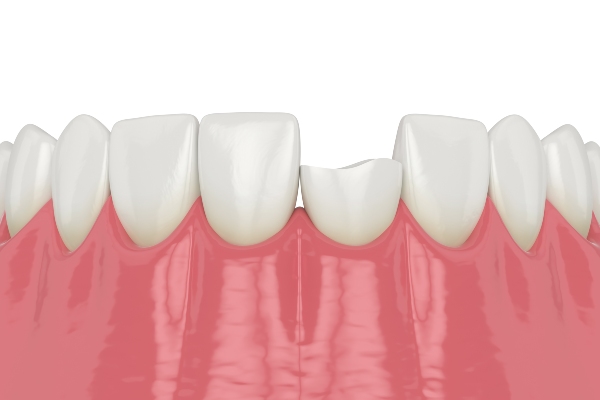How a Dentist Uses Dental Bonding to Repair Teeth

A dental bonding treatment is capable of restoring damaged teeth. Most people have dental chipping and fractures after a sports accident or an adventure mishap. This can cause low self-esteem. If you want to know how a dentist can use dental bonding treatment for dental repair, here are the details.
The dental problems a dentist can treat with dental bonding
This type of dental restoration can restore various types of dental damage. Dentists can use it to bring back the healthy look of a patient’s teeth. This technique is effective in improving the look of teeth. It can even enhance the structure of damaged teeth in one or two dental bonding appointments.
Accidents, injuries, overuse, decay, and aging result in dental damage. Many patients experience scratches, chips, cracks, cavities, and other forms of irregularities over time. Scratches can result from overuse in teeth grinding and gnawing on pens. Cracks and chips can happen after biting on something hard or a terrible blow to the face. Cavities develop from long-standing tooth decay. Teeth lengthening is a sign of gum recession.
Staining is a common dental issue many dentists resolve. Many factors contribute to this dental problem. Consuming staining foods and drinks can discolor teeth. Sodas, red wine, chocolates, beets, berries, and tomato sauce can leave pigments on dental surfaces.
Drinking alcoholic beverages and smoking tobacco can stain teeth as well. Nicotine can leave brown and even black stains on teeth. Some medications can do the same. Dental staining also happens as a consequence of medical treatments. Neck or head radiation treatments for cancer can discolor teeth.
Dental gaps can be an eyesore. It can trigger movement in neighboring teeth. The gaps can also encourage plaque and dental calculus buildup. Even after orthodontic treatment, there could still be gaps and crookedness.
Dentists can correct the mentioned dental problems with dental bonding. It is a quick and easy technique. All it takes is one or two dental appointments. This type of restoration is for patients who do not have time for dental implants or crowns.
The process of dental bonding
The patient will not need a local anesthetic before the dental bonding treatment. It is a non-intrusive procedure. The dentist will not need to remove healthy dental structures at all. A thorough dental examination must happen first. This will help the dentist determine the extent of the dental damage. It will also pinpoint other potential dental issues in need of addressing.
A dental X-ray can confirm the patient’s suitability for the dental bonding treatment. Preparing the surface of the tooth will follow. Deep cleaning will be in order. The dentist will roughen the surface of the tooth with an etching liquid or gel. This will allow the bonding material to stick better to the tooth’s surface.
The dentist will apply a strong adhesive to the affected tooth. Then, the dentist will place the tooth-colored resin material on the natural tooth. Curing or hardening the material with a laser or ultraviolet light will follow. The dentist will shape and shine the bonding material to make it blend with the texture and color of the natural teeth.
Benefits of dental bonding
Dental damage and staining can affect one’s appearance and self-esteem. Correcting these problems right away is always an advantage. The dentist can recommend dental bonding for this purpose. Here are its benefits:
- It is versatile and durable. Dental bonding can repair and restore teeth. It can even close dental gaps and smoothen hairline fractures. The composite resin material is durable, and the process is quick. The results can last for years with proper dental maintenance and oral care.
- It gives a natural appearance. Composite resin is tooth-colored. This makes the patient’s restoration look natural. The dentist can match the color of the bonding material to the color of the neighboring natural teeth. This will be a secret between the patient and the dentist.
- It needs little maintenance. Dental bonding will not need maintenance anymore. The dentist will tell the patient to avoid staining foods and drinks, but beyond that, there will be no need for re-treatment.
- It is non-invasive. Some dental restorations need anesthesia before the procedure starts. Dental bonding does not. The dentist may need to clean and roughen the surface of the teeth, but this does not hurt at all.
- It is efficient and quick. The dentist will take about 30 minutes to about an hour to complete the treatment.
A dental bonding treatment can repair and restore your teeth
Damage to teeth is a common dental problem. Many people do not have the time to get dental veneers or crowns. That is why dentists offer dental bonding as a quick option. An appointment or two can give you a second chance at having healthy-looking teeth.
Are you considering getting dental bonding in the Everett area? Get more information at https://gkdentaloffice.com.
Check out what others are saying about our dental services on Yelp: Dental Bonding in Everett, MA.
Recent Posts
One of the options to fix teeth imperfections such as chips, cracks, discolorations, and slim gaps is dental bonding. This procedure typically only takes 30 to 60 minutes, and it can greatly improve one's smile. However, teeth bonding does not last forever. It typically needs to be replaced every 10 years or so, although replacement…
There are some cases where a stained or chipped tooth can be fixed with dental bonding or contouring. While these issues can be more severe and so require a different solution, something like an uneven edge or unsightly spot can often be treated without more invasive procedures that can affect the entire mouth.This procedure enhances…
If you're considering a form of cosmetic dentistry to fix a damaged tooth, then you might want to consider an option such as dental bonding to restore your tooth. Cosmetic dentistry covers a whole range of procedures and applications designed to make your smile look the best it can be. While most folks know about…
Dental treatments like dental bonding are not just about enhancing the appearance of your teeth and giving you a new smile. They can also improve your oral health, prevent dental problems, and keep your mouth in good shape. Dental bonding is a straightforward and cost-effective process. If you are thinking about dental bonding, continue reading…


